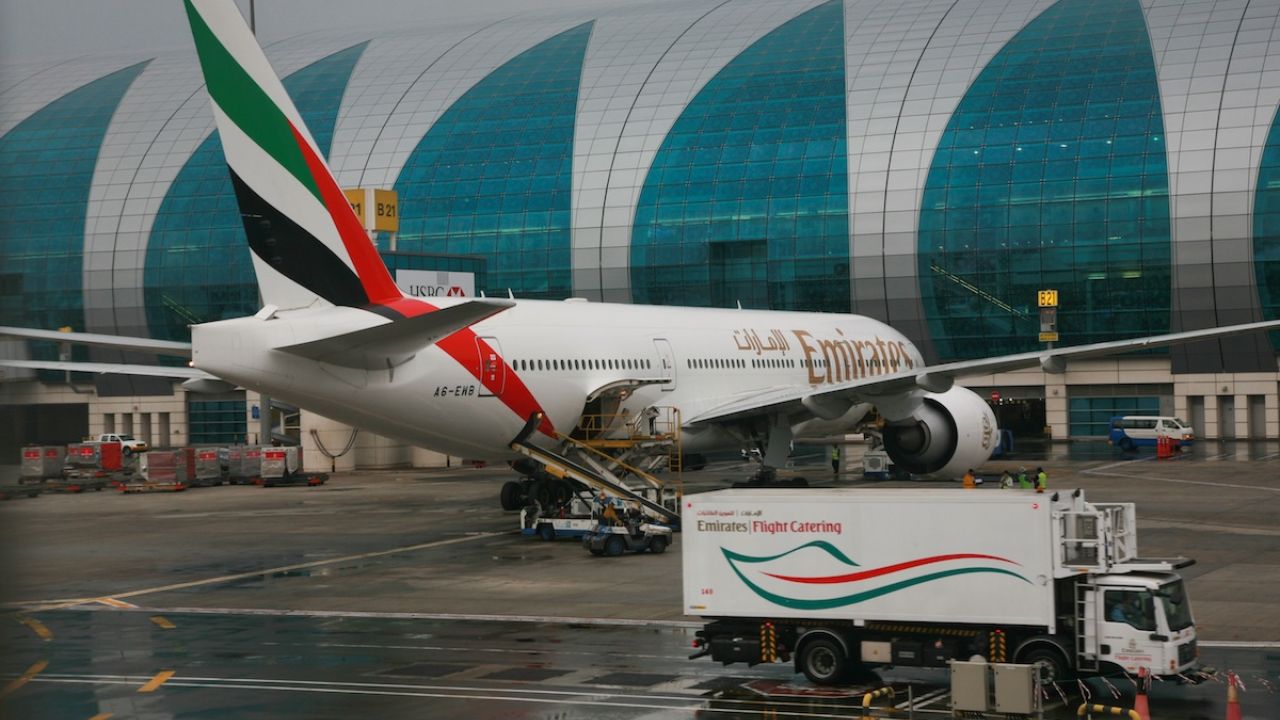IATA calls on Middle East co-operation to ensure ‘no country left behind’
IATA is urging greater co-operation within the fast-developing Middle East to ensure “no county is left behind” in aviation’s growth story. Graham Dunn reports from Jeddah.
IATA’s senior vice-president, operations, safety & security, Nick Careen, speaking at the IATA Aviation Day Middle East North Africa event in Jeddah on 7 May (photo: IATA).
Speaking at the IATA Aviation Day Middle East North Africa event in Jeddah on 7 May, the airline association’s senior vice-president, operations, safety & security, Nick Careen, flagged the above-average air transport growth expected in the region over the next 20 years; 4.8% average annual traffic growth in the Middle East compared with the wider industry rate of 3.3%.
“But we also need to face a reality that’s difficult for some to accept: the region is not developing evenly,” said Careen.
“The region has already proven that bold vision and strategic investment can yield extraordinary results. Now is the time to extend that spirit of co-operation beyond borders - to create partnerships that deliver benefits not just to individual states, but to the entire region.”
Alongside geopolitical instability, Careen highlights fragmentation and the lack of a harmonised aviation as impending connectivity in the region – particularly for smaller states and markets. He also flags that some small or lower-incoming countries in the Middle East have struggled with limited local demand, constrained resources and business models that cannot match the economies of scale of the super-connector airlines.
IATA is therefore calling for a more integrated approach within the region, identifying opportunities around harmonising airspace and regulations, a collective push on sustainable aviation and increased knowledge sharing.
“A Middle East united by open skies, harmonised regulations, and shared innovation would be even more competitive, more resilient, and deliver even more economic and social benefits for people,” Careen says. “And it would ensure that no country is left behind in aviation’s growth story.”
Notably Careen sees an opportunity for Saudia Arabia to play strong role in this, especially given the ambitions growth and developments in the Kingdom in line with its Vision 2030 strategy.
During the event IATA announced several training agreements with Saudi airlines, airports, and academic institutions to address critical skills needed to support the Kingdom’s growing aviation sector.
“When we talk about things that need to be focused on like collaboration global standards Saudi plays a big role in that because they are open to it,” he says, noting the association does quite a lot of work with Saudi Arabia. “It is important, because whatever happens here potentially could be leveraged out to other nations within the Middle East.”
In a keynote address at the event, president of Saudi Arabia’s General Authority of Civil Aviation (GACA), Abdulaziz Al-Duailej, said that by investing and working together “MEA can lead the next era” of global aviation. “Saudi Arabia, through GACA, stands ready to partner, collaborate and drive this shared future,” he says.
Al-Duailej underscored the progress and contribution aviation has already made, both in the region and Saudi Arabia.
“We are seeing tangible results,” he says. “By 2024 passenger traffic across the Middle East exceeded pre-pandemic levels by 9%, more than double the global growth rate, while Saudia Arabia’s civil aviation sector recorded a remarkable increase of over 24% compared to pre-pandemic.”
Growth in Saudi Arabia comes amid major investment in the sector in line with the Kingdom’s Vision 2030 growth and transformation targets.
“At a national level, Saudi Arabia is delivering on the aviation side, not only through ambition, but through concrete actions,” he says. “As a strategic regulator, GACA’s mission is to enable growth, foster competition and ensure better services for passengers.”
During 2024 the number of passengers traveling through Saudi airports exceeding 128 million, the number of flights surpassing 905,000, and air cargo volumes exceeding 1.2 million tons.
Stay up to date
Subscribe to the free Times Aerospace newsletter and receive the latest content every week. We'll never share your email address.

